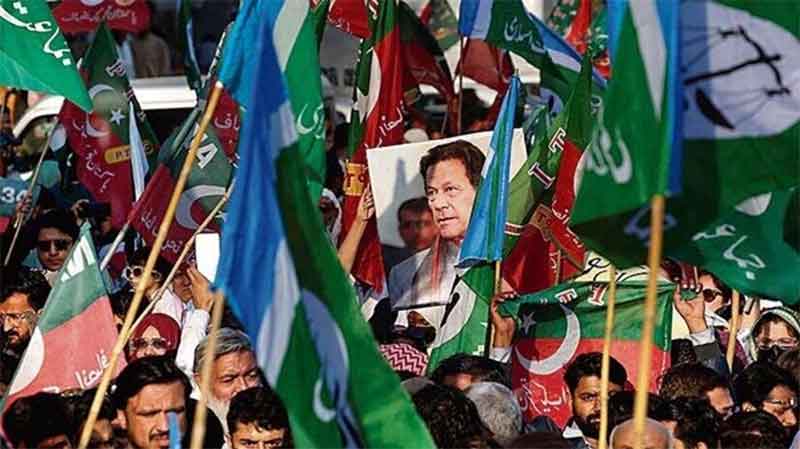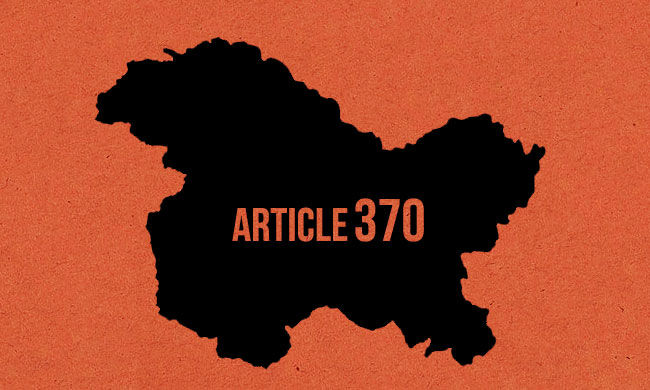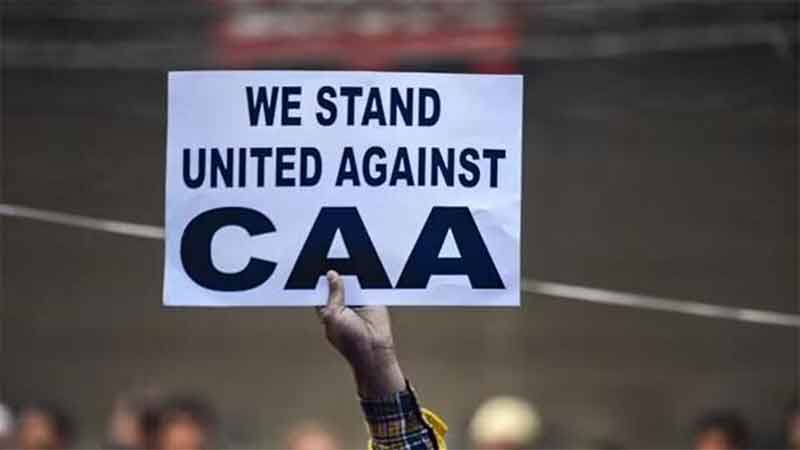
There were no black-bordered newspaper announcements of either the abrogation of the Articles 370 and 35A or the immediate clampdown imposed on Kashmir, effected as they were by devious and totalitarian, unconstitutional means. There was no broadcast-in-the-dark by any TV broadcaster. And, in the days following there was no running count of the days of incarceration for the entire valley, as hoped and imagined by recently-resigned IAS officer, Kannan Gopinathan (“I think if I had a newspaper, the only thing I would be printing on the front page would be ‘19’ on the front page, because today is the nineteenth day,” he says.”).
Some say the Indian public, the media and India’s opposition were caught by surprise. Which is hard to believe, given the broad and sinister way in which the government had gone about its actions. Maybe it was just Kashmir-fatigue, given that the conflict in the Indian Kashmir region has gone on for so long. Anyway, we don’t know for sure. But one thing for sure – caught by surprise or not on Aug 5, for most Indians outside of Kashmir, this did not seem like a “stop press” moment, a moment to record a stupendous injustice carried out in broad daylight, as it were; a moment when the skies darkened, the earth shook and people ran out into the streets…
We slowly started getting some opinion pieces in newspapers the next day onwards and the capital city of New Delhi saw two or three people’s protest marches over the next few days (one of them led by the left parties). But other than that, it seemed to be business as usual. Considering the enormity of what had been brought into effect in Kashmir – two legal instruments snuffed out and the entire valley put under ruthless lockdown – the rest of India seemed to just shrug its shoulders and move on. And we are not even talking about those celebrating the move. A few other cities in India too witnessed some protest marches, but by and large a visible public mobilization against what had just happened was missing.
In the backdrop of the massive demonstrations recently in tiny, David-like Hong Kong against the Goliath-like China, India saw hardly any organized and sustained effort to make known its utter revulsion for the actions in Kashmir. In terms of protests and mobilizations, another recent remarkable counterpoint was the mammoth response by Ravidasia and other Dalit groups to protest the demolition of the Ravidas temple in Tughlaqabad, Delhi. While thousands upon thousands of protestors against the temple demolition poured into Delhi from neighboring states, many making journeys of several hours in buses and trains, the issue of Kashmir saw almost no swell of support of that nature even as the days passed by and news of “all is not well” in Kashmir kept trickling in; almost no boots on the ground in the rest of India – except, ironically, in Kashmir!
It is true that comparisons are odious – and flawed – and may obscure more than they reveal. The Hong Kong demonstrations were backed by a populace which has largely been proud of its independance from China, however symbolic that has increasingly been. So the protests were the expression of a popular sentiment which has existed in the public for a while now. One can also consider the recent protest by the Sudanese people against the dictatorial regime of Omar al-Bashir which were a result of long years of suffering by the Sudanese people. And other examples abound: fresh in our memory are examples of recent loss of influence of Ahmet Erdogan in Istanbul, the resistance to confederate monuments in the United States, the tumult against long-standing, repressive governments as represented by the Arab Spring, including the pro-democracy protests in Bahrain, the anti-austerity protests in southern Europe and even the occasional and dramatic acts of resistance in Russia. All of the above examples are from regions where the repression has been severe, reprisals against dissent often swift and deadly, where the people had always been cowed down by the might of powerful regimes, and individual and/or organizational resistors were dealt with severely. Yet, long-closed lids burst, limits of patience were breached, long-silenced voices spoke up again – and eventually people-power exhibited itself in one way or another to at least pose a challenge to an environment of crushing injustice – if not overthrowing the old order completely. In all the cases above it seems that an undercurrent of popular feelings and opinion coalesced in the form of popular resistance that took to the streets in acts of physical defiance and often brought about what might have seemed well-nigh impossible earlier.
In India, the incumbent government won a second term with an even greater margin that it had five years ago. So while there has always been a somewhat slender opposition to the governing ideology of the BJP, it has further being marginalized after these elections, which only served to strengthen the hold of the BJP over the minds and imaginations of the Indian populace. So one could say that there does not exist any pervasive and countrywide negative and resentful popular sentiment against the ruling party – one that would rise up in a show of protest and outrage over any of the government’s actions. As Nivedita Menon puts it[1], “Any student of mass movements anywhere in the world knows that mass movements of this scale [that is, say on a national scale, as enumerated earlier] only arise around issues where the largest sections of the people feel affected by it.”
This, in fact, is a phase of the consolidation of BJP’s popularity and support – and it seems like a self-fulfilling prophecy: the more BJP acts on its electoral promises, the greater is its following, as evidenced by the steep increase in its membership.
However, it is important to keep in mind that BJP itself received about 38% of the votes cast and the larger coalition it is part of, the NDA, received about 45% – which means that about 62%/55% of the votes went for not-BJP/not-NDA. Now there is no telling if a “not-BJP/not-NDA” vote is necessarily a vote that was cast in some sort of fundamental opposition to the policies and beliefs of the BJP or the NDA – just as all the votes cast in favor of the BJP and NDA do not mean utter fealty to the party line. But one can say in all fairness that more than half the population did not find a compelling reason to vote for the BJP or the NDA. Which is saying a lot and indicates a sizeable proportion of the population not sold on the vision that the BJP projects.
It is also important to remember that it is not as though large mobilizations and protests have not happened in the recent past in India, even under the BJP regime. Apart from the recent Ravidasia response to the demolition of the Ravidas temple in Delhi, the country also witnessed all-India strikes by trade unions, marches and sit-ins by farmers and a pan-Indian bandh by Dalit groups (against the SC/ST act). In 2016, Bengaluru saw what seemed like a sudden flash-strike by
thousands of garment workers, mostly female. Besides, very significantly, mass-based movements have resisted seemingly well-funded corporations (often government backed), like the resistance to the mining project in Niyamgiri Orissa, and blocked the POSCO steel mill, again in Orissa. There are so many more examples.
In fact, given the dissatisfaction with a wide-variety of issues initiated by the present government, most notably the demonetisation program and a new regime of taxes, it was expected in the run-up to the 2019 elections that that displeasure would be manifested against the BJP. For some strange reason that did not come to pass…
What one can see from the instances of mobilizations and demonstrations which have managed to have significant support is that they have been specific-issue-based movements and demonstrations. There have been few cross-cutting issues that have drawn in the support of a wide-variety of groups. Nivedita Menon, from the same article quoted above, mentions several movements, like Singur and Nandigram, Kudankulam, India Against Corruption and the effort to scrap a SEZ in Goa, where different constituencies – from faith-based organizations to labour groups – came together to lend support to the cause. But, as she notes about such alliances, “They came together, they went their separate ways once their campaign succeeded.”
What is happening in Kashmir represents a confluence of many issues that are all entangled and bearing down on that piece of territory. Some news reports have laid the blame squarely and exclusively on the gates of BJP and the Sangh Parivar’s Hindutva ideals. That certainly seems to be preponderantly true. The religious nationalism that the Parivar holds dear and espouses, the idea of a certain geographically defined “Bharat Mata” plays a crucial role of underscoring the verity of the nation. Tied to this is the idea of “Akhand Bharat,” that of an essentially single underlying Hindu identity and roots of a landmass that stretches from Burma to Afghanistan – including India, Pakistan, Bangladesh, Sri Lanka and Tibet – that the RSS identifies as a “Rashtra” based on some loose and highly problematic reading of history. Now that the BJP also has made statements about “retaking” the part of Kashmir administered by Pakistan, it seems as if the step in Kashmir is towards consolidating the idea of a geographically uniform India.
Kashmir featured frequently in V.D. Savarkar’s seminal text, Hindutva, in three ways. It predictably marked the northernmost reaches of the “land of the Hindus” to denote the unity of the Hindus from north to south (and east to west), as frequent references to “From Kashmir to Rameshwar,” and “From Ceylon to Kashmir,” in the text indicate. Then, finding mention twice is the oppression of the “Brahmins of Kashmir”: “Tegbahadur, the Great Guru, who not only championed the cause of this war of Hindu liberation in Punjab but laid down his life for it, is reported to have advised the Brahmans of Kashmir, who oppressed and threatened with ‘Islam or death’ solicited his help…”
The third way in which Kashmir figures is Savarkar’s classic tex is by way of specific reference to the “Mohammedans of Kashmir” as people who cannot be counted as Hindus: “Many a Mohammedan community in Kashmir and other parts of India as well as the Christians in South India observe our caste rules…yet, it is clear that though their original Hindu blood is thus almost unaffected by an alien adulteration, yet they cannot be called Hindus in the sense in which that term is actually understood, because, we Hindus are bound together not only by the tie of the love we bear to a common fatherland and by the common blood that courses through our veins and keeps our hearts throbbing and our affections warm, but also by the tie of the common homage we pay to our great civilization—our Hindu culture…”
So, it is undeniable that the wellsprings of this desire to “re-integrate” Kashmir as part of the land of the Hindus, settle some historical scores (oppression of Kashmiri Brahmins by Islamic invaders etc) and finally gain a measure of upper hand over the the Kashmiri Mohammedans who are outside the pale and hope of ever owning up to their “innate Hinduness.” On the one hand, we then have the juggernaut of the Hindutva project seizing control of Kashmir to exact a sort of just desserts, on the other hand there is also the issue of the political impulsions of this project that rationalise and sanitize – why, even elevate – the adopting of totalitarian ways to achieve an objective. There is arrogance that comes with power and there is a self-righteousness. Even the most dubious ends keep justifying the crudest of means. It is these portentous methods that are increasingly worrying, where the headiness of a second term gained from a resounding majority seems to increasingly justify any and all excesses.
To counter the state of affairs, as epitomized by the actions in Kashmir and also reflected in a host of other instances of majoritarian excess carried out with utter impunity, what is needed is a resistance that is strong and deep in its ranks. The resistance has to be across siloed progressive groups else the pervasiveness and sheer numbers needed to resist effectively this massive onslaught will not be achieved. What with the continual attacks on those who have been speaking up against rights abuses, the tinkering with rights-based acts and legislation like RTI and UAPA, and the continued ineffectiveness of Indian civil society organizations like the PUCL etc, there is a need for a joining of forces as far reaching as possible. Student groups and labour unions have been conspicuously absent in their mobilizations against rights violations (I guess they have their own issues to attend to). But merely depending on petitions and statements will not do – nor will any amount of outrage and bravado on social media solve anything. Any strategy has to be a combination of on-ground efforts and outreach followed by mass action and also astute interventions in the cacophonous battlefield of ideas, memes and bytes. There has to be popular resistance and all those who oppose such right-wing, divisive ideologies, all those who call themselves progressive and harbor ideas of social justice and equity have to create a stir so loud and powerful that it announces loud and clear that it is not business as usual, that all is not well in Kashmir, that no justification for oppressing an already suffering people is ever acceptable.
Reference:
[1] https://indiaresists.com/new-social-movements-new-perspectives-nivedita-menon/
Ananda Maitreya is a Delhi-based writer and a student of social movements. He has been involved in various struggles of the marginalized people, including Dalit and Adivasi movements and the Palestinian struggle.
SIGN UP FOR COUNTERCURRENTS DAILY NEWS LETTER














































